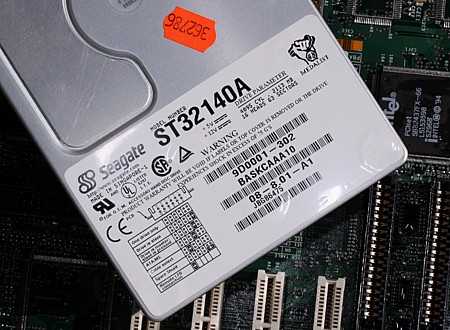
Photo: Red Hill.
Seagate ST32140
The 32140 was the first ever IDE drive over 2GB, something that had been long awaited and keenly anticipated. In those days, remember, drive space was always short, and few or none of the modern-day soultions to a shortage of space applied.
Since about 1997 or '98, capacity is no longer an issue, as almost any normal use is amply provided for by a single cheap and readily available drive. This was not so in earlier years, and power users with (for example) twin 1.08GB drives and no room for expansion would put their names down on a waiting list for the first shipment of each new release.
The wait for a 2GB drive seemed even longer than usual, with none of the manufacturers able to stretch traditional IDE products to that capacity. Eventually, Seagate took the existing 2.1GB Hawk SCSI drive (a fairly specialised high-end product at the time) and adapted it to use an IDE interface. Despite a strong early showing, the ST-32140 had a short market life — it was expensive to manufacture — and it quickly gave way to cheaper but more technologically advanced drives with late-nineties features like MR heads, PRML read channels and much higher areal density. In its time, though, this was the biggest, fastest IDE drive money could buy.
| Performance | 0.93 | Reliability | AA1 |
| Data rate | 67.7 Mbit/sec | Spin rate | 5376 RPM |
| Seek time | 10ms | Buffer | 128k |
| Platter capacity | 502MB | Encoding | RLL |
| Form | 3½" slimline | Interface | IDE mode 4 |
| ST32140A | 2.11GB | 8 thin-film heads | ** |